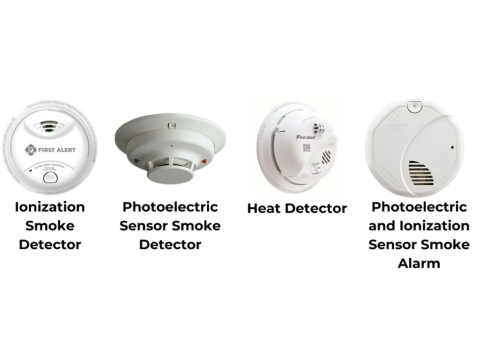TYPES OF FIRE ALARM SYSTEMS
Fire alarm systems detect fires and can also control related technologies like evacuation alerts or smoke removal systems. These systems fall into three main categories based on how they manage wiring loops:
Threshold Systems
- Simplest and most affordable.
- Detects fires by reaching preset thresholds (e.g., smoke density, temperature).
- Main limitation: It doesn’t pinpoint the specific sensor activated, only the affected loop.
Addressable Systems
- Assigns unique IDs to each sensor.
- Monitors individual sensor status and health.
- Costlier than threshold systems but offers better precision and reliability.
Addressable-Analog Systems
- Advanced systems with real-time monitoring of environmental conditions.
- Ideal for high-security facilities due to precise detection and robust functionality.
TYPES OF FIRE ALARM LOOPS
A fire alarm loop connects sensors and devices within the system. The two primary types are:
Threshold Loops
- Operates by detecting changes in electrical parameters when sensors activate.
- Common in basic systems but lacks precision in identifying specific issues.
Addressable Loops
- Transfers digital data from sensors to control panels.
- Offers superior monitoring capabilities and can integrate various sensor types.
Loop Topologies
- Radial: Used in basic systems; cost-effective but limited in functionality.
- Ring: Supports advanced systems, maintains partial functionality even during faults, and connects multiple sensor types.
TYPES OF FIRE DETECTORS
Fire detectors vary based on detection methods:
Smoke Detectors
- Detect smoke particles in the air.
- Types:
- Point Detectors: Cover specific spots.
- Linear Detectors: Monitor larger areas.
- Aspirating Detectors: Highly sensitive but costly.
Heat Detectors
- Triggered by temperature changes.
- Types:
- Maximum Detectors: Triggered when temperature hits a set threshold.
- Differential Detectors: Monitor temperature rate-of-rise.
- Linear Heat Sensors: Use heat-sensitive cables to detect fires over long distances.
Flame Detectors
- Identify open flames through infrared or ultraviolet sensors.
- Benefits: High accuracy, long range, ideal for outdoor use.
Manual Call Points
- Allow manual triggering of alarms in emergencies.
CHOOSING THE RIGHT FIRE ALARM SYSTEM
Selecting a fire alarm system requires assessing factors like building size, purpose, and fire risk. While threshold systems are cost-effective for small spaces, modern addressable-analog systems are becoming the standard due to their precision and reliability.
For the best fire alarm solutions tailored to your needs, visit safsale.com—your partner in safety and protection!

